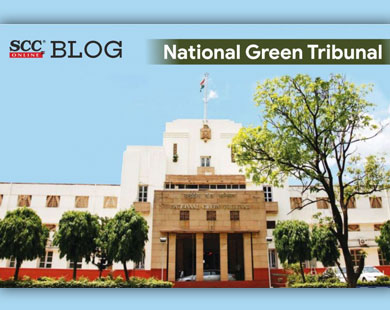National Green Tribunal: The Principal Bench comprising of Adarsh Kumar Goel (Chairperson), Sudhir Agarwal (Judicial Member), and Senthil Vel (Expert Member) in an application against violation of environmental and safety norms in setting up of tents for pilgrims in dry riverbed near holy cave, Amarnath, Jammu and Kashmir (J&K) held that necessary safeguards should be adopted for safety of the pilgrims and protection of the environment. It further said that apart from having flood protection measures in place and discouraging overnight stay at the cave camp, augmentation of infrastructure is necessary.
It was alleged that due to the omission in complying with the laid down norms, 16 people breath their last on 01-07-2022 due to a flash flood as the riverbed and flood plain were not hinder free to perform their environmental functions, leading to such horrific accidents.
The Tribunal had sought response from the Chief Secretary of J&K and J&K Pradesh Congress Committee (‘PCC’) to the effect regarding the steps taken to prevent such frightful incidents.
However, in the response it was stated that the incident in question could not be prevented despite best efforts. Though flood protection measures were taken in the form of protective bunds’ crates etc, but it could not cater to sudden flow of huge quantity of water over a naturally declining gradient.
A comprehensive layout plan was approved by the Shri Amarnathji Shrine Board (‘Shrine Board’) consequent to which all the tents and community kitchen were erected, away from the riverbed. The shrine board accompanied with District administration of Anantnag and Ganderbal districts, had made sufficient number of arrangements at all Yatra camps to accommodate 1.25 lakhs pilgrims in the union territory of J&K as against 0.7 lakh. However, despite increasing the bed capacity for accommodating more pilgrims, the actual carrying capacity at Holy Cave was reduced significantly which ensured that there was no assemblage of Yatri beyond the approved limit, at any site.
It was specified that it was the Army who had erected more than 2000 number of high-quality tents to accommodate 10-12 people. At the same time, Department of Rural Sanitisation provided for sanitisation arrangements during the yatra by enhancing the total number of toilet seats. Moreover, Pahalgam Development Authority (‘PDA’) carried out significant flood protection/mitigation works in the form of Crate protection work etc. to the tune of Rs. 30 Lakhs. It was estimated that the magnitude of loss of human life and property would have been higher, had the protection bund not been constructed at the site. However, at the time of incident the flow of volume of water was much higher than the expected calculations. The high degree of slope resulted in turbo discharge, gushing of water, flow of boulders and debris which resulted in the loss of human life.
It was further stated that, overnight stay of pilgrims was discouraged at the Holy Cave camp which was minimised by reducing the number of accommodation facility of tents and shops as against the enhanced stay facility at Panjtarni; considering the altitude, weather fluctuation and abrupt fall in night temperature.
Since 2012, the facilities for Amarnathji yatris have been increased multi-fold; be it accommodation, sanitation, increase in number of toilets, built of systematic sewage treatment plan, langar, medical facility, security arrangements, condition of tracks, infrastructure, drinking water facility, power supply, ban on single use of plastic, installing organic decomposition of the wastes, functioning of battery-operated cars etc.
In 2022, the Shrine board launched Radio Frequency based identification (‘RFID’) tagging of yatris and service providers which helped in real time tracking of Yatris and Service providers proving to be of great help in tracing the pilgrims during flash flood.
It was set forth that, no environmental clearance was required for setting up of tents and langar along the tracks of Amarnathji Shrine which does not lead to violation of environmental norms.
Nevertheless, The Tribunal noted that the activities and arrangements should be at a distance from the riverbed, in the interest of safety of the visitors as well as the environment.
[Brinda Mishra v. Union Territory of J&K, 2022 SCC OnLine NGT 268, decided on 07-12-2022]






